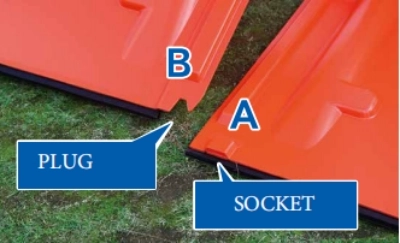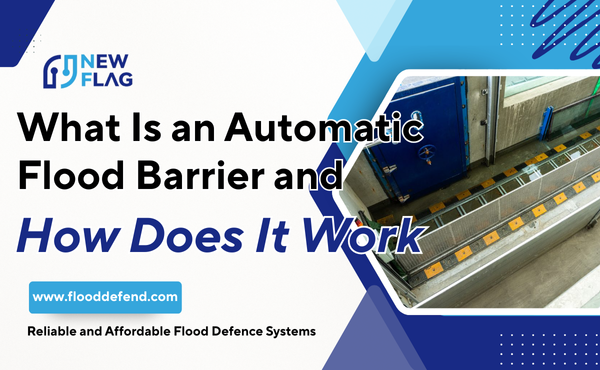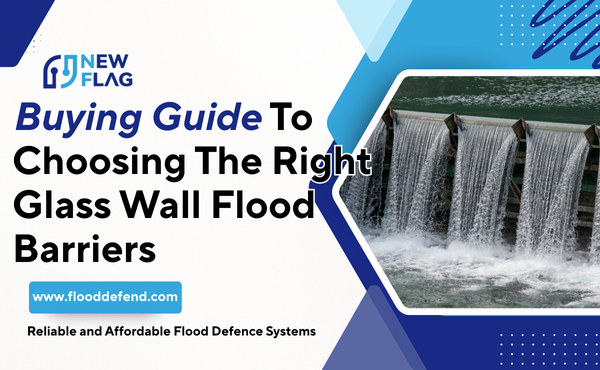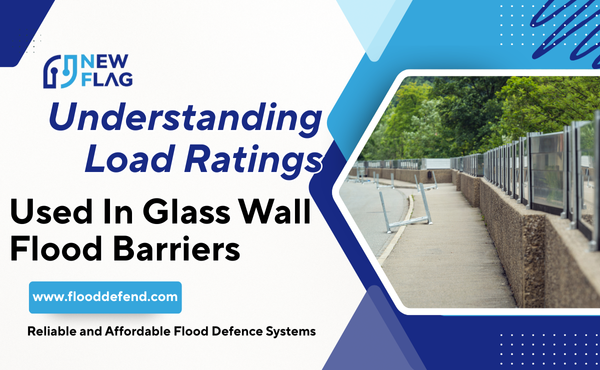Flooding is an increasing concern for many communities, businesses, and homeowners around the world. Choosing the right temporary flood barrier system is a critical decision that can save property, reduce damage, and even protect lives. This guide will walk you through the key factors to consider when selecting a temporary flood barrier, using features of the FloodDefend / NEWFLAG L-Shape Free-Standing Temporary Flood Barrier as an illustrative example.

1. Assess Your Flood Risk & Site Conditions
Before evaluating barrier systems, you must understand the specific flood risks and conditions of your site.
-
Flood Height / Water Level: How high can floodwaters realistically rise at your site? Check historical data, flood maps, local weather patterns. The NEWFLAG Temporary Flood Barrier comes in F50, F80 series (protection heights of ~ 50 cm and 80 cm), with F100 under development. NEWFLAG
-
Duration & Frequency: Are floods infrequent but severe, or frequent and mild? The frequency determines how often the barrier will be used, and thus informs durability and maintenance cost.
-
Flow Velocity / Pressure: Fast-moving water exerts more force; standing water less so. The strength of joints, sealing, and structural reinforcement matters more under high pressure.
-
Ground & Foundation Conditions: Is the deployment area level? Clean? Free of debris? Good sealing requires a tight interface between barrier base and ground. Also check for anchor points or side wall connections.
-
Obstructions & Layout Constraints: Are there doorways, curbs, steps, irregular surfaces? The barrier needs to adapt to the site (for example, corner joints, flexible seals, board configurations).
2. Examine Barrier Design & Engineering
Not all temporary flood barriers are created equal. Key design features will influence performance and reliability.
| Design Feature | Why It Matters | What to Look For |
|---|---|---|
| Sealing System | Prevents water leakage, especially at joints or where barrier meets wall/ground. | Dual sealing (e.g. EPDM gasket + sponge gasket), P-shape front seals, reinforced contacting interfaces. NEWFLAG’s design adds front P-shape EPDM seal and double sealing for reduced leakage. NEWFLAG |
| Joint & Board Connectors / Locking Mechanism | Joints are weak points; poor connectors can fail under stress. | Robust locking clamps, stainless steel components, folded angle joints rather than sharp 90° to avoid stress concentration. NEWFLAG uses stainless steel locking clamps and folded angle joints to improve strength. NEWFLAG |
| Material Strength & Durability | Barriers may be used repeatedly, stored and deployed many times; exposure to sun, water, corrosion can degrade parts. | Aluminium or other corrosion-resistant materials, high-quality seals, reinforced brackets, durable finish. |
| Modularity & Height Options | Flexibility to adapt to different flood heights, site widths, and shapes. | Systems available in different height series (e.g. F50, F80, F100) and boards/panels that can be joined horizontally. NEWFLAG offers F50 and F80; F100 is in development. NEWFLAG |
| Ease & Speed of Deployment | In emergencies, every minute counts. | Simple board-and-clamp installation, parts that are easy to handle, minimal specialized tools, possibility to preassemble parts for quicker deployment. NEWFLAG’s board design allows connected pieces stored on side to reduce transport & deploy time. NEWFLAG |
3. Consider Logistics: Storage, Transport, Maintenance
Even a well-engineered barrier will fail if logistics are overlooked.
-
Storage Footprint: Barriers must be stored somewhere dry, secure, and with space. Systems that fold or stack and require less space are better. NEWFLAG notes that boards can be stored in two or three pieces connected and placed on the side, reducing storage area.
-
Transportability: How easy is it to move panels/boards to the site? Does deployment require many people? Are components lightweight enough?
-
Durability / Maintenance: Seals, clamps, joints will need periodic inspection and likely parts replacement. Choose a system with easily replaced parts. Also check warranties or manufacturer support.
-
Weathering & Corrosion Resistance: Barriers are exposed to moisture, sometimes salt, UV. Materials like stainless steel, corrosion-resistant alloys, UV stable seals matter.
4. Assess Cost vs Long-Term Value
Budget is always a constraint, but lowest up-front cost isn’t always best in long term.
-
Initial Cost: Purchase price of barrier, freight/shipping, installation.
-
Installation / Labor Costs: How many people needed, how long it takes. Time is money.
-
Maintenance & Replacement: How often do components (seals, gaskets, connectors) need replacement or repair? How easy is access to replacement parts?
-
Cost of Failure: If barrier leaks or fails, damage from floodwater can be costly—property damage, business interruption, insurance impacts. Sometimes spending more on a robust barrier is more cost-effective when considering potential losses.
5. Review Case Studies, Certifications, & Supplier Reputation
-
Performance History: Has the system been used in flood events? Are there real-world case studies or customer testimonials?
-
Certifications & Testing: Has it been tested to waterproofing classes, structural load tests, or certified by independent bodies? NEWFLAG claims waterproof performance improved by 50% with P-shape EPDM, reaching Japan’s Class 1 waterproof standard. NEWFLAG
-
Support & Warranty: What support does the manufacturer provide? Are spare parts available? Is the service responsive?
-
Customization & Local Conditions Adaptability: Can the barrier be modified (size, materials) for specific local conditions like climate, local weather, flood patterns?
6. Match System to Your Specific Needs: Decision Checklist
Here’s a checklist to help you decide:
| Question | If “Yes”, Lean Towards … | If “No”, You May Consider … |
|---|---|---|
| Need protection above ~50 cm water height? | Use F80 / F100 style, higher panels, stronger joints. | Maybe simpler / lower barrier system is sufficient. |
| Frequent floods or repeated use expected? | Prioritize durability, reuse, good warranty. | Occasional use—maybe lower cost is acceptable. |
| Limited space for storage & quick response? | Compact-storage, fast deployment design. | Storage may not be an issue; could use bulkier system. |
| High water pressure / fast flow (river surges, storm surge)? | Strong joints, reinforced structure, excellent sealing. | Low flow areas—more forgiving designs might work. |
| Budget constraints? | Consider lifecycle cost rather than just upfront price. Better to invest in higher-quality system up front if risk is significant. | If risk is very low, minimal solution may be acceptable. |
7. Summary & Recommendations
Putting it all together:
-
If you are in a region with moderate to high flood risk, need reliable protection, and require fast deployment, then a system like the NEWFLAG L-Shape Free-Standing Temporary Flood Barrier offers many advantages: strong sealing, modular height options, durable components, and compact storage.
-
For low-risk or occasional needs, less expensive or simpler temporary barriers may suffice—but you’ll be trading off leakage risk, durability, and possibly speed of deployment.
-
Always plan ahead: purchase, install and test before flood season, train staff or occupants, inspect the system periodically, and ensure spare parts are accessible.








